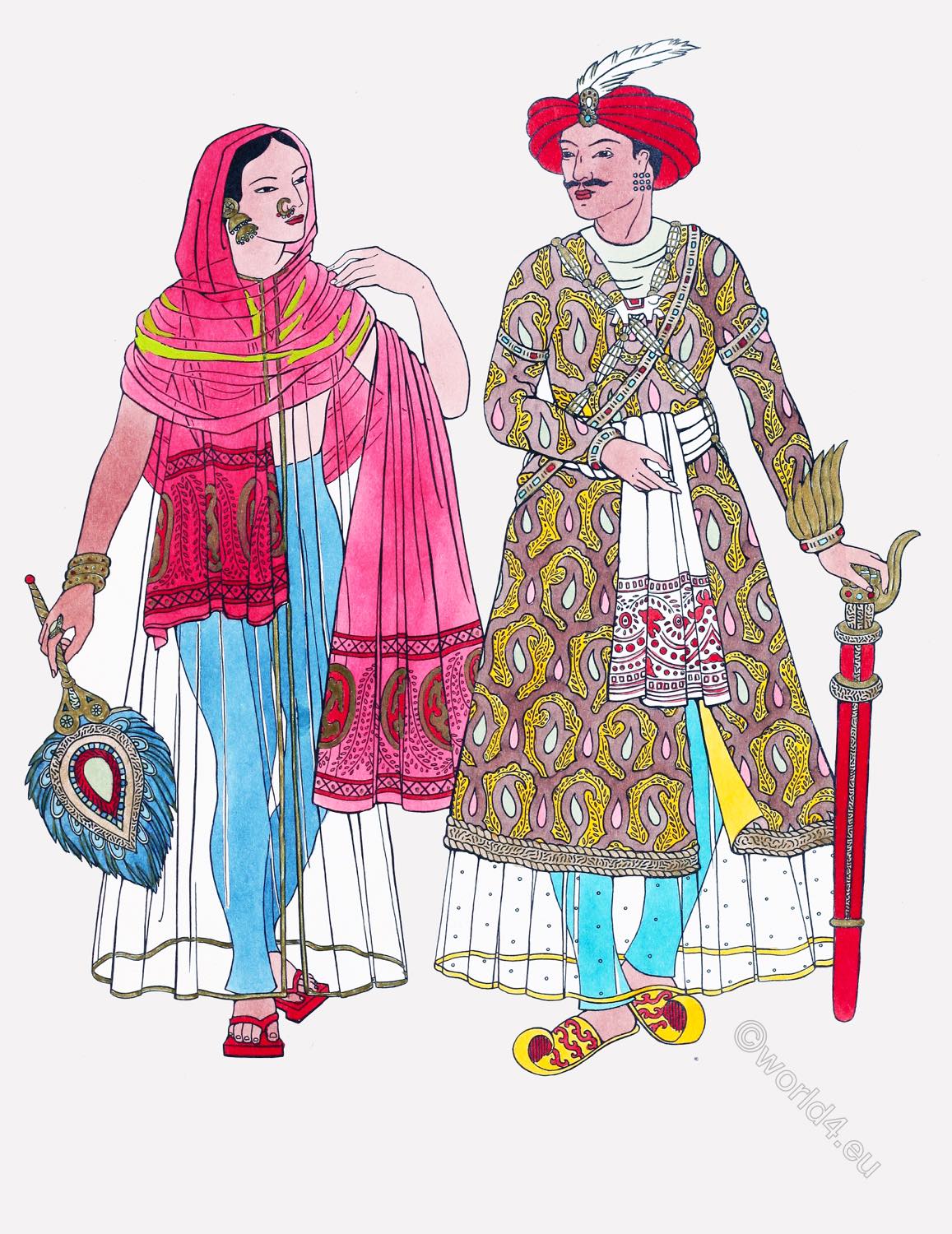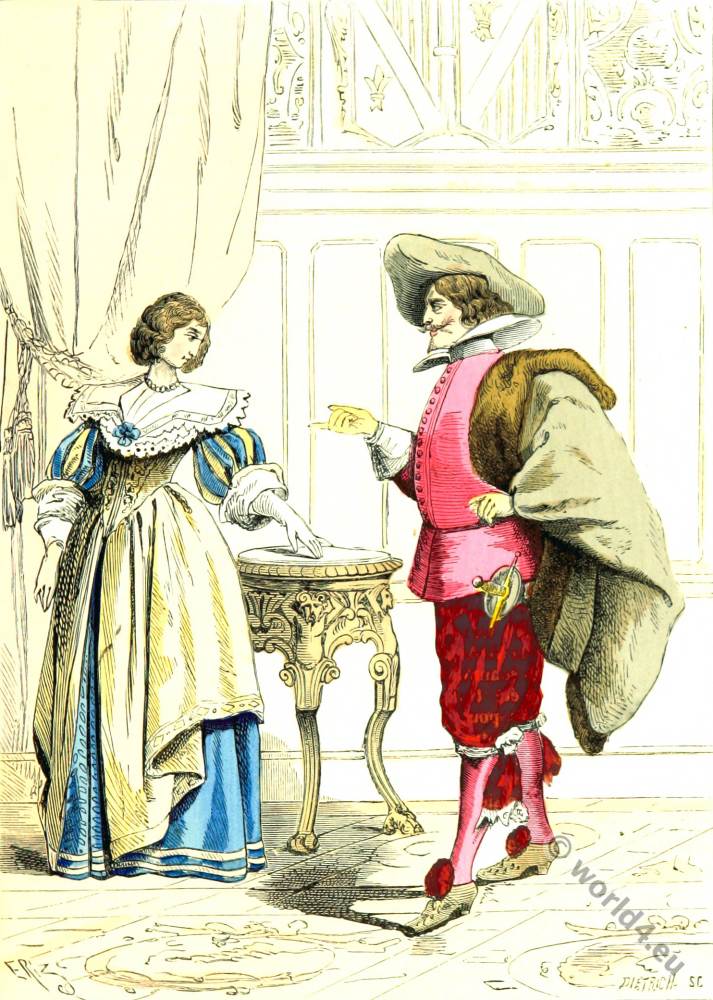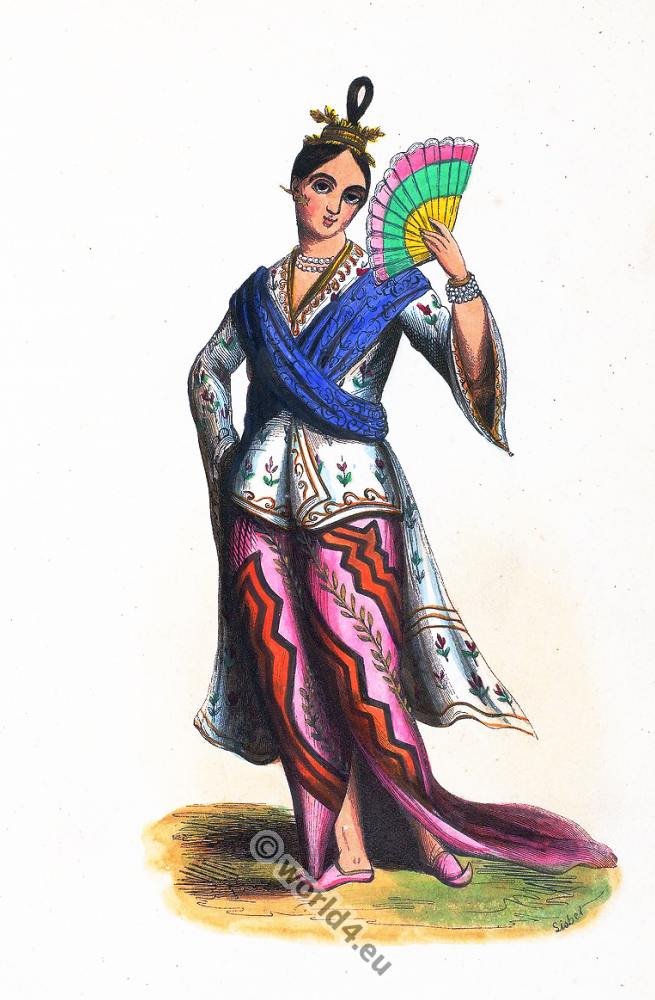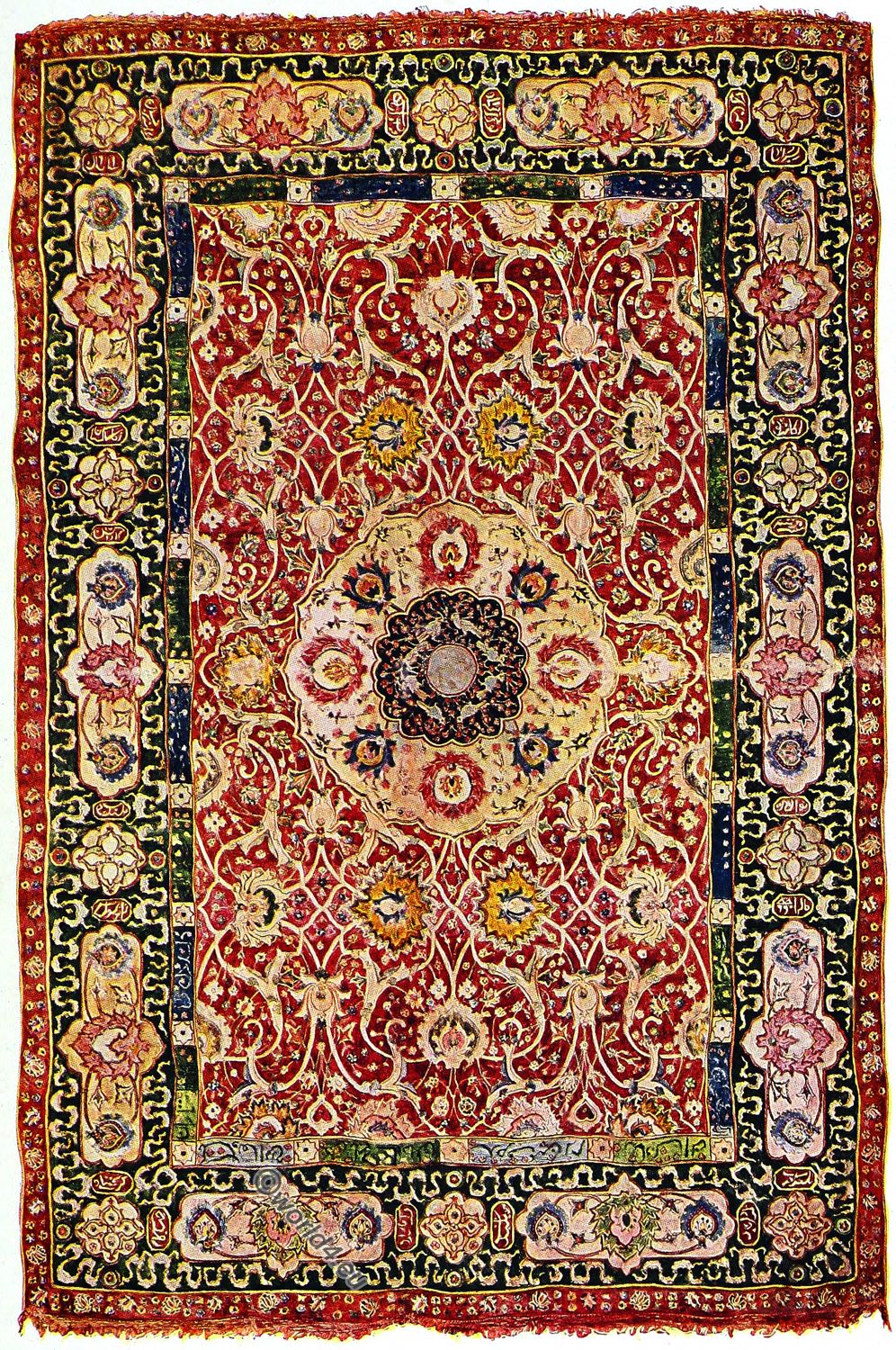
INDIA PLATE No. 20
Woman in typically Oriental ensemble. The man wears jodhpur trousers.
The great peninsular mass of India, like a gigantic wedge with continental Asia behind it on the north, divides the Indian Ocean roughly in two. Its area of almost two million square miles makes it comparable to our country east of the Rocky Mountain states; yet within this area lived, in 1935, a population of three hundred sixty-two million disturbed by race, religion and an obstinate caste system. The British, who rule India, have found it a land of great social and political problems.
It is an ancient country; and the two figures shown here are dressed like their counterparts of ancient days. Since dress does not change drastically in the East, no set date can be put on these costumes. Today, in India, there are nobles and there are dancing girls; one can reasonably assume that on festal occasions their dress is not too different from that pictured here.
The woman wears a short green jacket with a deep V neck and tiny, tight shoulder sleeves; it barely covers the breasts. Her close-fitting silk trousers reach from the waist to the ankles. Over this typically Oriental ensemble, she wears a transparent gauze tunic that hangs from the shoulder to the feet in a straight line. It opens down the front and has its two edges and hem taped in gold.
A long, red, translucent shawl completes her dress. It will be noticed that the voluminous draped shawl is most characteristic of the Indian woman’s ensemble. It is usually draped in an intricate manner, lending a soft loveliness to the languorous grace inherent in these dark-skinned women of the East. The scarf shown here is very wide and has heavy gold embroidery on its two ends. It hangs to below the waist from the right shoulder, while the other end is draped over the head, left shoulder, across the back, and over the left arm.
Her straight black hair has been drawn back from a center parting, and the characteristic gold ring is worn in one nostril. The heavy gold ear ornament, a ring, and three gold bracelets complete the jewellery. Her fan is of peacock feathers. Her flat clogs of wood are held on by a strap across the toes.
The man wears a loose-fitting green shirt, visible only at the throat, and a pair of blue “jodhpurs” (see Plate 19). Over the trousers he wears a transparent skirt (see Plate 19) reaching to the ankles and ornate with small dots and a yellow silk binding on the hem. His outer garment is the lined, beautifully patterned, tunic-like coat with characteristic, long tight sleeves. A large, white, fine cashmere girdle binds it at the waist and hangs in front to show its beautifully embroidered wide hem.
His jewellery and accessories include elaborate gold arm bands and bracelets set with gems; a jewelled, pendant earring; a heavy, jewelled and lacquered scabbard for his sword; and a sort of jewelled baldrick or strap covering the breast.
His jewelled, plumed turban of red silk can be put on and taken off like a hat. His slippers are of the usual Oriental type with turned down counter and curled toe. Note how it, too, is embroidered with a scroll design to round out the luxuriant, rich ensemble.
Source: Museum Extension Project.
Related
Discover more from World4 Costume Culture History
Subscribe to get the latest posts sent to your email.






